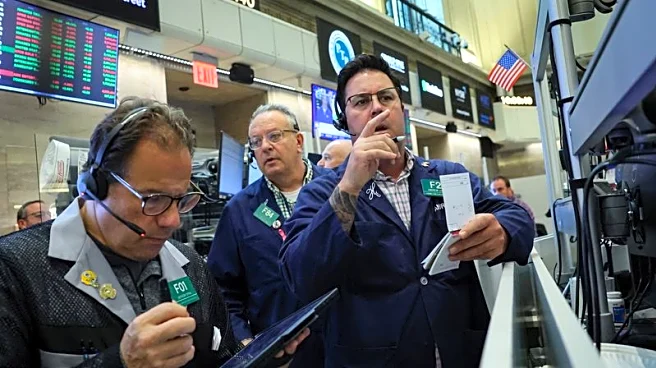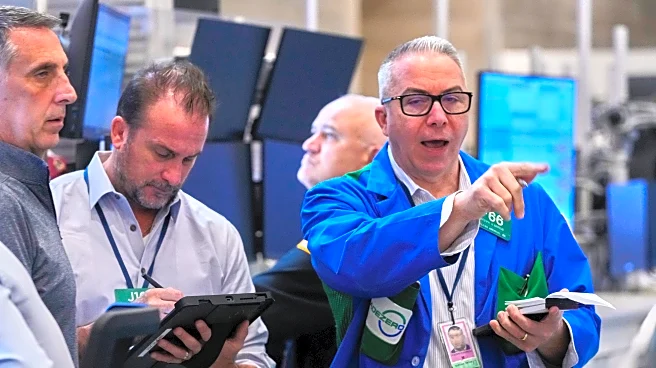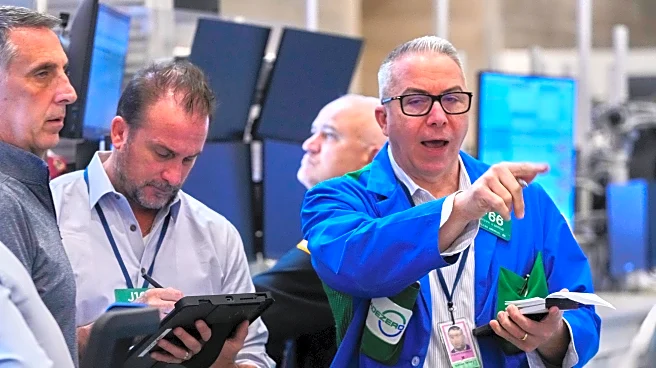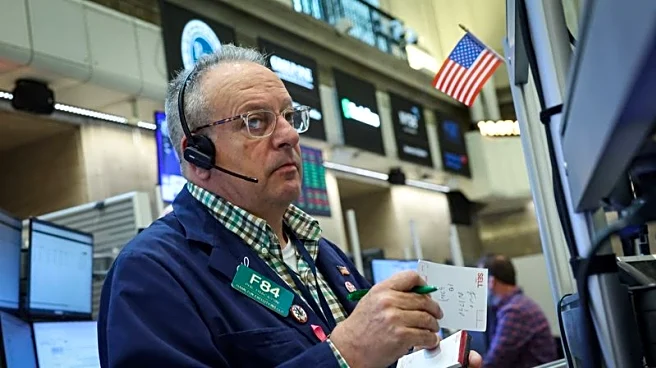What's Happening?
Major U.S. stock indexes reached record highs on Friday after the release of inflation data showing a smaller-than-expected increase in the Consumer Price Index (CPI) for the previous month. The CPI rose by 0.3%, slightly below the anticipated 0.4%, which
has reinforced expectations that the Federal Reserve will cut interest rates at its upcoming policy meeting. The Dow Jones Industrial Average rose by 562.73 points, the S&P 500 climbed by 66.16 points, and the Nasdaq Composite advanced by 297.83 points. Additionally, shares of Intel saw a slight increase following better-than-expected earnings results. The U.S. dollar index remained nearly flat, while oil prices eased after a previous surge due to U.S. sanctions on Russian oil companies.
Why It's Important?
The lower-than-expected inflation data is significant as it suggests a controlled pace of price growth, alleviating fears of a crisis similar to 2022. This development is likely to influence the Federal Reserve's decision to cut interest rates, which could further stabilize the stock market and encourage investment. The stock market's surge reflects investor optimism, particularly in sectors linked to artificial intelligence, with major companies like Apple and Microsoft set to report earnings soon. However, some analysts caution that the rapid market growth may indicate a potential bubble, which could pose risks to investors if market conditions change.
What's Next?
The Federal Reserve is expected to announce interest rate cuts at its policy meeting scheduled for October 28-29, with a quarter-percentage-point reduction anticipated. This decision will be closely watched by investors and could have significant implications for market stability and economic growth. Additionally, the upcoming earnings reports from major tech companies will be pivotal in assessing the sustainability of the current market surge. Stakeholders, including investors and policymakers, will need to monitor these developments to gauge the broader economic impact.
Beyond the Headlines
The recent market movements highlight the ongoing influence of macroeconomic indicators on investor behavior and market dynamics. The interplay between inflation data, interest rate policies, and corporate earnings underscores the complexity of economic forecasting and investment strategies. As the Federal Reserve navigates its monetary policy decisions, the potential for long-term shifts in market confidence and economic growth remains a critical consideration.















